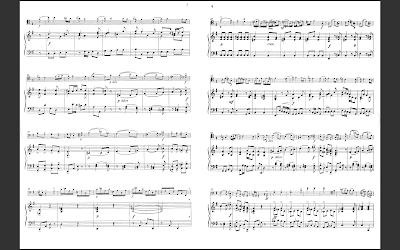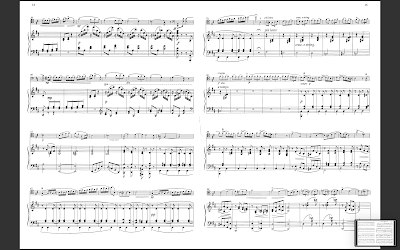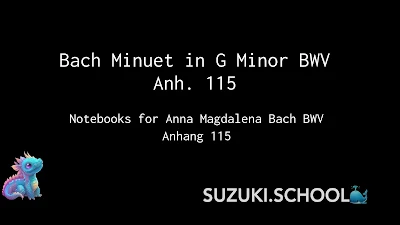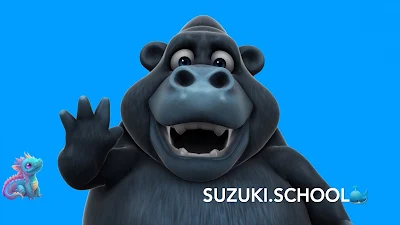Suzuki School
We 🥰 music 🎧 and we love ❤️ Suzuki Method. Come on in 🪇 and let's play 🎹 music! I am 🧚♀️ Sarnia de la Maré FRSA and I have been teaching music 🎶 for many 🦄 wonderful years. We have our own TV 📺 shows and podcasts 🐭 with tons of music tools.🐷 All levels and ages 🤗 Now we have the internet and I can teach the world to sing, 🐹 literally. I specialise in cello 🎻 and piano 🎤 but do lots of other cool stuff too.
Saturday, May 4, 2024
Thursday, May 2, 2024
Learning the viola can be a rewarding experience. Here are some tips for beginners to help you get started:
Learning the viola can be a rewarding experience. Here are some tips for beginners to help you get started:
Schedule Practice for Peak Energy: Plan your practice sessions during the time of day when you feel most energetic. If you’re a morning person, practice then; if your energy peaks in the afternoon, schedule your practice during that window1.
Create a Distraction-Free Practice Area: Keep your practice space clutter-free and free from distractions. Silence your phone, tidy up, and have everything you need at hand. A focused practice environment leads to better results1.
Practice Frequently: Consistency matters more than duration. Opt for shorter, frequent practice sessions rather than longer, infrequent ones. Studies show that practicing more often leads to better overall improvement1.
Warm Up Before Playing: Playing the viola involves repetitive movements that strain specific muscles. Warm up those muscles before practicing to prevent injuries. Even simple finger stretches can help1.
Record Yourself and Listen: Recording your practice sessions allows you to hear areas that need improvement. Put yourself in your audience’s shoes and identify what needs work. Most smartphones have built-in audio recorders, or you can find free apps in app stores1.
Use a Metronome: Timing and rhythm are crucial. A metronome is an excellent tool for practicing both. If you don’t have one, you can use free online metronomes on your desktop or mobile1.
Avoid Constantly Looking at Your Fingers: While it’s natural for beginners to watch their fingers, try to look ahead at your sheet music or focus on an object in the room. Connecting your hearing with finger position leads to better pitch accuracy and a more polished performance1.
Perform Whenever Possible: Performing in front of others counts as practice under pressure. It’s also a great way to build confidence and improve your overall playing skills1.
Remember, learning any instrument takes time and patience. Enjoy the process, and don’t hesitate to seek guidance from a teacher or experienced violist. Happy playing! 🎻🎶123
Suzuki School, what is it and how can it help you?
The Suzuki School is a place for budding musicians who want to learn to master their instruments. But it is also a space for fun and connecting with your tutor, Sarnia de la Maré FRSA. You can also ask questions about anything related to your playing because sometimes we us musicians come across the simple and the complicated issues we struggle with.
If you want more help you can book one to one lessons in piano, cello and viola whenever you need them without signing up for a full term.
We also offer jazz and ABRSM courses.
But first, let's find out about the Suzuki method.
The Suzuki Method is a music curriculum and teaching philosophy developed by the Japanese violinist, pedagogue, educator, and humanitarian, Dr. Shinichi Suzuki. Here are the key aspects of this method:
Listening and Repetition:
- The Suzuki method emphasizes the importance of listening to music extensively. Students are encouraged to listen to recordings of the pieces they are learning.
- Repetition is a fundamental practice. Students play the same piece repeatedly to internalize the music and improve their skills.
Parental Involvement:
- Parents or guardians play an active role in their child’s music education. They attend lessons, take notes, and guide practice sessions at home.
- Dr. Suzuki believed that a supportive environment at home is crucial for a child’s musical development.
Sequential Repertoire:
- All Suzuki students follow the same sequence and choice of musical materials for their particular instrument.
- Each Suzuki School instrument has its own repertoire. Beginning with Volume I, the child masters each new composition, moving carefully forward, acquiring new skills with each piece that prepares them for the ones to follow1.
Positive Reinforcement:
- The method creates a reinforcing environment for learning music.
- Encouragement, praise, and positive feedback are essential to motivate students and build their confidence.
Every Child Can:
- Dr. Suzuki’s philosophy is encapsulated in the phrase “Every child can.”
- He believed that musical ability is not innate but can be nurtured through proper teaching, practice, and exposure to music.
The Suzuki Method has been widely used around the world and has helped many children learn to play instruments, particularly the violin, at a high level23. If you’re interested in exploring this approach further, consider connecting with the British Suzuki Music Association, which trains teachers in the Suzuki Method and supports families involved in the Suzuki movement4. 🎻






















